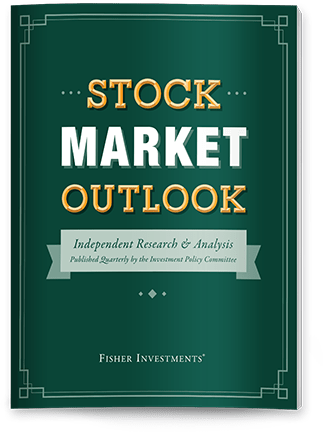Personal Wealth Management / Expert Commentary
This Week in Review | Equity Supply & Demand, Trade Negotiations, US Inflation (Aug. 15, 2025)
The economy and markets can feel dizzying and ever changing. That’s where we can help. Fisher Investments’ “This Week in Review” is a weekly segment designed to highlight a few things you may have missed this week, what they could mean for financial markets and why they matter to investors like you.
This week, we’ll be covering:
- A closer look at equity market supply and demand dynamics
- What this week’s US/China trade deadline extension could mean for markets
- The latest US inflation data
Want to dig deeper?
- Discussing whether or not tariff impacts are finally showing in latest inflation data: https://www.fisherinvestments.com/en-....
- How Chinese stocks navigating ongoing trade tensions with the US: https://www.youtube.com/wat....
Have feedback? Share your thoughts on this episode in just 1 minute by filling out this survey: https://fi.co1.qualtrics.com/jfe/form...
Transcript
Hello, and welcome to This Week in Review. This weekly segment is designed to highlight a few important developments you may have missed this week, what they may mean for markets, and most importantly, the potential impact for investors. To stay up-to-date with our latest market insights, subscribe to our YouTube channel or visit fisherinvestments.com. Now, let's review what happened this week. First, a look at supply and demand dynamics in today's equity markets. A critical thing to understand about equity markets is that stock prices ultimately move on the difference between supply and demand. That makes it essential to understand current market dynamics— how much supply is out there relative to demand. So, let's take a moment to check in on how those dynamics are moving markets today. On the supply side, initial public offerings, or IPOs, which increase stock supply, are rising from low levels, but they still remain well below their 2021 highs. More significantly, stock buybacks, where corporations reduce supply by buying back their own. Shares are on track to reach a record $1.1 trillion this year. Together, we think today's supply dynamics create a positive tailwind for markets— there's not too much supply creation or destruction happening. On the demand side, US investor sentiment is warming, with pockets of enthusiasm in areas like meme stocks or cryptocurrencies. However, other sentiment indicators, like use of margin debt, are elevated, but haven't reached euphoric levels. We've also seen more headlines about retail investors lately, but it's still institutional investors driving most market volume. Overall, warming investor sentiment is worth monitoring, but broad-based euphoria does not seem present today—particularly when considering that non-US investor sentiment remains much more subdued than in the US. Importantly, investor euphoria alone doesn't signal a market peak, and stocks can continue rising through euphoric sentiment. That was something we saw in the late 1990s ahead of the tech bubble, for example. Bear markets typically emerge when euphoria combines with deteriorating economic fundamentals. And today, we believe sentiment, political and economic drivers support a continued bull market over the next 12 to 18 months. Next, an update on trade negotiations. On Monday, the US extended trade negotiations with China by another 90 days, pushing that deadline to finalize a trade deal with China to November 10th. And while this extension delays clarity on tariffs, political uncertainty has already decreased significantly since early 2025, particularly after President Trump's budget bill passed in July. Markets are adapting to this administration's unorthodox approach, as evidenced by the CBOE Volatility Index, or VIX. Sometimes referred to as the "Fear Index," the VIX measures expected market volatility and often spikes during periods of uncertainty. Similar to February 2018's tariff-related volatility during Trump's first term, the VIX has since returned to below-average levels of expected volatility as markets adjust to heightened trade rhetoric. Finally, a US inflation update. On Tuesday, the July headline Consumer Price Index, or CPI, was released, holding steady at 2.7% year-over-year, coming in below analyst expectations. Core CPI, which excludes more volatile food and energy prices, rose slightly to 3.1%, which was above expectations. It's important to remember that moderate inflation is a normal byproduct of economic growth—the US has averaged around 3% annual headline inflation since 1926, meaning current levels remain below the historical norm. For stocks, what matters most is how actual data compares to investor expectations. We believe stocks likely stand to benefit as worries about severe tariff-driven inflation appear overdone. And while inflation expectations have eased some in recent months, we still think there's further room for reality to turn out better than widely perceived, which is bullish for stocks. That's it for this week. Thanks for tuning in to This Week in Review. If you're looking for more insights, then don't miss our other series, 3 Things You Need to Know This Week, released every Monday. You can also visit fisherinvestments.com anytime for our latest thoughts on markets. Thanks again for joining us and don't forget to hit like and subscribe!

Where Might the Market Go Next?
Confidently tackle the market’s ups and downs with independent research and analysis that tells you where we think stocks are headed—and why.




